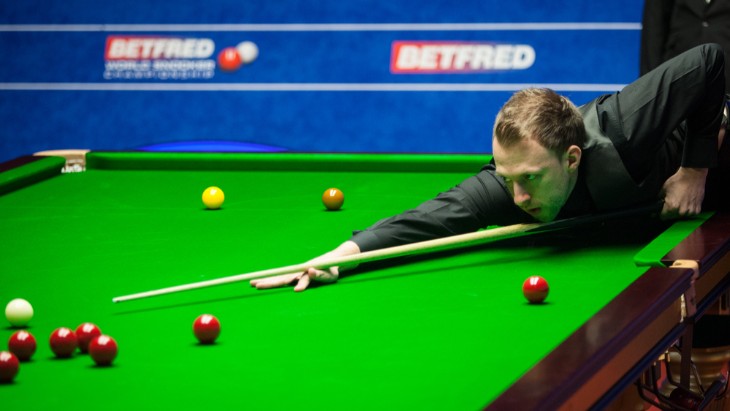- Analyzing Frame Score Dynamics
- Impact of Player Styles on Frame Outcomes
- Key Factors Influencing Frame Scores
- Statistical Tools for Predicting Frame Scores
- Role of Break Building in Frame Betting
- Understanding In-Play Betting Markets
- Risk Management in Snooker Frame Betting
- Technology and Data Analysis in Snooker Betting
- Conclusion
The essence of betting on snooker lies in understanding the game's rules and intricacies. A typical professional snooker match is divided into frames, with each frame representing a mini-contest within the overall match. The victor of a frame is the player who scores more points, and the match winner is determined by who wins the most frames. This structure provides a multifaceted betting landscape, where punters can bet on outcomes of individual frames, the overall match, or specific events within a frame, such as the highest break.
In addition to the basic match and frame betting, there are numerous other betting options available. These include predicting the exact score of a frame, the total number of frames in a match, and proposition bets such as whether a player will achieve a century break. The odds for these bets vary based on the players' skill levels, historical performances, and current form. For newcomers to snooker betting, it's essential to grasp these fundamentals before delving into more complex betting strategies.
Analyzing Frame Score Dynamics
The dynamics of frame scores in snooker are influenced by several factors that bettors should consider:
- Player Form: The current form of a player is a critical determinant of frame outcomes. A player in top form is more likely to win frames convincingly.
- Head-to-Head Records: Historical data showing past encounters between players can provide insights into potential frame outcomes. Some players might have a psychological edge over others.
- Playing Conditions: The conditions of the venue, such as table speed and lighting, can impact players differently, influencing frame scores.
- Tactical Approach: Players with a more aggressive style may score higher in frames but also risk losing frames quickly if their aggressive strategies fail.
Understanding these dynamics is crucial for making informed bets on frame scores. Bettors should analyze not only the statistical data but also consider situational elements like player mindset and match importance, which could significantly sway frame outcomes. By studying past matches and keeping current with player performances and conditions, bettors can gain a nuanced understanding of how frame scores might play out in future matches.
Impact of Player Styles on Frame Outcomes
The impact of individual player styles on frame score outcomes is a critical aspect to consider in snooker betting. Each player brings a unique approach to the table, influencing the pace and outcome of frames. For example, an aggressive player known for taking risks and aiming for high breaks might score heavily in a frame but also leave opportunities for their opponent if they miss. In contrast, a more tactical and defensive player might play for safety, leading to longer frames with potentially lower scores.
To understand this impact better, consider the following:
- Aggressive Players: Known for high-risk, high-reward strategies, they are more likely to produce volatile frame scores.
- Defensive Players: These players focus on safety and precision, often leading to tactical battles and lower scoring frames.
- All-Rounders: Players who can adapt their style based on the opponent and match situation. They might vary their approach, leading to unpredictable frame scores.
Assessing a player's style and how it matches up against their opponent is essential in predicting frame scores. Bettors should analyse past performances of players against similar styles to gauge potential frame outcomes. This analysis provides a strategic edge in predicting not only the winner of a frame but also the nature and scoreline of the frame itself.

Key Factors Influencing Frame Scores
Several key factors play a crucial role in determining the frame score in snooker. Understanding these can significantly enhance the accuracy of betting predictions:
- Player Stamina and Concentration: The physical and mental stamina of players can greatly affect frame scores, especially in longer matches. Fatigue can lead to errors, impacting the score of individual frames.
- Break-Building Ability: A player's skill in compiling high-scoring breaks is a major determinant of frame scores. Players with superior break-building skills are likely to score higher in frames.
- Match Pressure and Stage: The stage of the match and the pressure involved can influence frame scores. For instance, frames in the final stages of a tournament might be lower-scoring due to increased pressure.
- External Conditions: Factors such as table conditions, audience presence, and even weather can subtly influence players' performances and, consequently, frame scores.
By considering these factors, bettors can better predict the possible outcomes of frame scores. It's not just about the player's ability, but also about how external conditions and match situations can sway the course of a frame.
Statistical Tools for Predicting Frame Scores
The use of statistical tools to predict frame scores has become increasingly prevalent in the realm of snooker betting. With the advent of advanced data analytics, bettors now have access to a wide array of statistical models and tools that can analyze past performances, player statistics, and match conditions to forecast frame outcomes. These tools often use historical data to identify patterns and trends that might not be immediately apparent, providing a more scientific approach to betting.
Two critical aspects of these tools include:
- Historical Performance Analysis: This involves examining past matches to understand how players perform under various conditions and against different opponents. Such analysis can reveal tendencies in frame scoring patterns, assisting in more accurate predictions.
- Probabilistic Models: These models use statistical principles to calculate the probabilities of different frame score outcomes. They take into account various factors, such as player form, head-to-head records, and playing conditions, to provide a quantified prediction.
By incorporating these statistical tools, bettors can approach snooker betting with a more analytical and informed mindset. However, it's important to remember that while statistics provide valuable insights, the unpredictable nature of sports means that there's always an element of uncertainty in any prediction.
Role of Break Building in Frame Betting
The role of break building in snooker is pivotal in determining the frame score and, consequently, in frame betting. Break building refers to a player's ability to score a high number of points in a single visit to the table. This skill is not just about potting balls; it involves strategic positioning for the next shot, ensuring a continuous scoring sequence. Players adept at break building can dominate a frame, often leaving little opportunity for their opponents to score. This dominance is a critical factor to consider when betting on frame scores, as a strong break builder can drastically alter the expected frame outcome.
Moreover, break building is not only about scoring but also about exerting psychological pressure on the opponent. A high break can intimidate an opponent, potentially affecting their performance. Bettors should keep a close eye on players' break-building abilities and patterns, as these can provide significant clues about potential frame outcomes. Players known for their break-building prowess are often favoured in frame score predictions, especially in conditions that suit their playing style.
Understanding In-Play Betting Markets
In-play betting, involving bets placed after a snooker match has started, offers dynamic opportunities for betting on frame scores. The nature of in-play betting requires bettors to be attentive to the evolving circumstances of the match. Several factors should be considered:
- Momentary Form: Observing how players are performing in the ongoing match can give insights into their likely performance in upcoming frames. Changes in form can be crucial in in-play betting.
- Match Flow: Understanding the rhythm and flow of the match is important. Momentum shifts can drastically alter the outcomes of subsequent frames.
- Live Odds Adjustments: In-play betting markets adjust odds in real-time based on ongoing events. Keeping track of these changes can offer advantageous betting opportunities.
In-play betting requires quick decision-making and an ability to interpret the game as it unfolds. Bettors must be adept at reading the game and anticipating shifts in momentum, as these can significantly affect frame scores. This type of betting is particularly appealing for those who enjoy the dynamic and immediate nature of live sports betting.

Risk Management in Snooker Frame Betting
Risk management is a critical component of successful betting on snooker, especially when dealing with the unpredictability of frame scores. The nature of snooker betting, with its numerous variables impacting each frame, demands a strategic approach to manage risks. One effective strategy is diversification of bets across different types of wagers, such as frame winners, exact frame scores, and highest break scores. This approach can mitigate the risk associated with any single bet.
Another vital aspect of risk management involves setting limits on wager amounts and adhering to a pre-defined betting budget. This disciplined approach helps in avoiding the pitfalls of emotional or impulsive betting, which can often lead to significant losses. Bettors should also continuously evaluate the odds offered by different bookmakers, ensuring they are placing bets with the most favourable terms. Staying informed about player forms, historical performances, and any recent changes in playing conditions can also aid in making more calculated and less risky betting decisions.
Technology and Data Analysis in Snooker Betting
The integration of technology and data analysis has revolutionised the way bettors approach snooker betting, especially in predicting frame scores. Advanced data analytics provide a wealth of information that can be leveraged for more informed betting decisions. Key aspects where technology plays a significant role include:
- Performance Analytics: Sophisticated software is used to analyse player performances, break patterns, and frame score trends. This analysis helps in understanding the strengths and weaknesses of players in different scenarios.
- Real-Time Data: Technology enables the collection and analysis of real-time data during matches. This includes player statistics, frame progression, and even the precision of shots, offering a dynamic perspective for in-play betting.
- Predictive Modelling: Machine learning algorithms and predictive models are employed to forecast future frame outcomes based on historical data and current match conditions.
Utilising these technological tools, bettors can gain a competitive edge by accessing detailed analyses and predictions. However, it's important to balance statistical insights with an understanding of the game's unpredictable nature.
Conclusion
In conclusion, understanding and effectively betting on snooker frame scores involves a multifaceted approach. It requires an in-depth knowledge of the game's fundamentals, an analysis of player styles and historical trends, and an awareness of the psychological and external factors influencing player performance. The role of technology and data analytics cannot be overstated in providing valuable insights and predictive capabilities. However, the unpredictability inherent in sports means that even the most well-informed betting strategies carry a degree of risk.




.webp)


 (1).webp)




















